Umair Mohammad
Task Allocation for Asynchronous Mobile Edge Learning with Delay and Energy Constraints
Dec 04, 2020
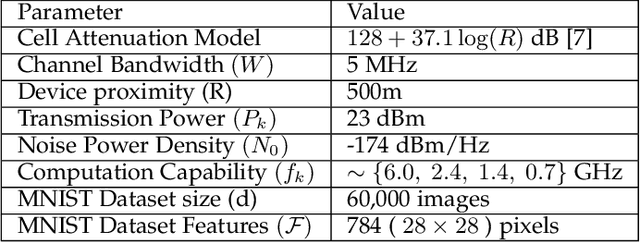
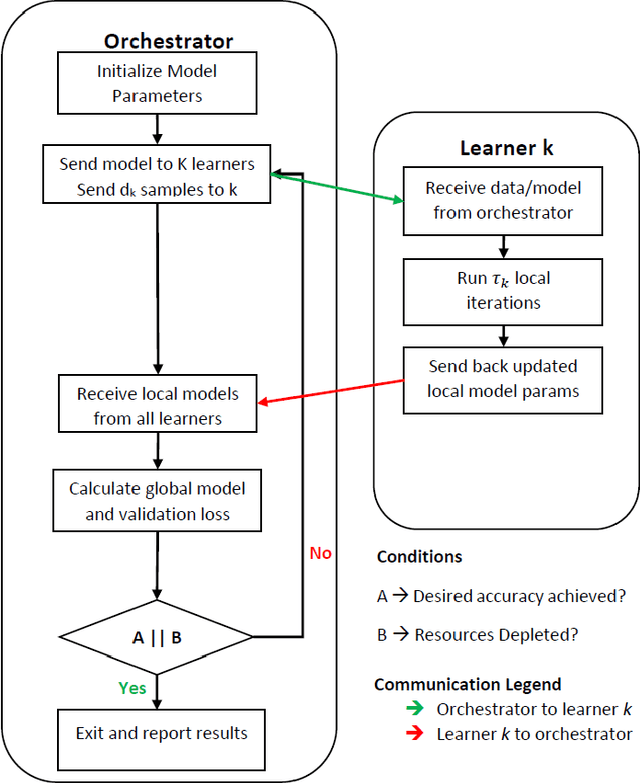
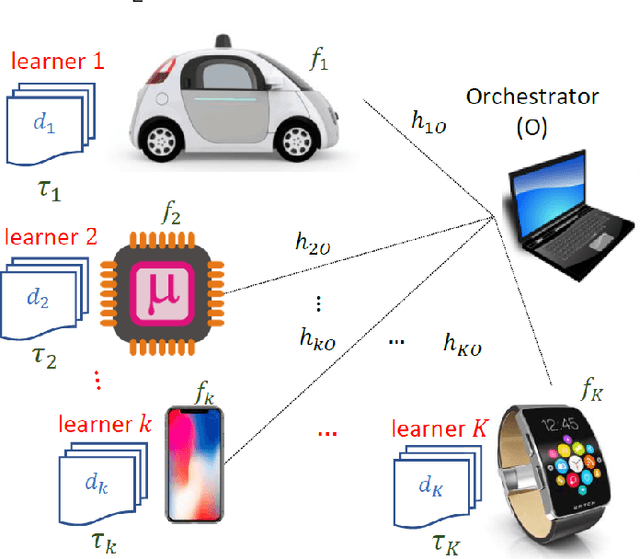
Abstract:This paper extends the paradigm of "mobile edge learning (MEL)" by designing an optimal task allocation scheme for training a machine learning model in an asynchronous manner across mutiple edge nodes or learners connected via a resource-constrained wireless edge network. The optimization is done such that the portion of the task allotted to each learner is completed within a given global delay constraint and a local maximum energy consumption limit. The time and energy consumed are related directly to the heterogeneous communication and computational capabilities of the learners; i.e. the proposed model is heterogeneity aware (HA). Because the resulting optimization is an NP-hard quadratically-constrained integer linear program (QCILP), a two-step suggest-and-improve (SAI) solution is proposed based on using the solution of the relaxed synchronous problem to obtain the solution to the asynchronous problem. The proposed HA asynchronous (HA-Asyn) approach is compared against the HA synchronous (HA-Sync) scheme and the heterogeneity unaware (HU) equal batch allocation scheme. Results from a system of 20 learners tested for various completion time and energy consumption constraints show that the proposed HA-Asyn method works better than the HU synchronous/asynchronous (HU-Sync/Asyn) approach and can provide gains of up-to 25\% compared to the HA-Sync scheme.
Optimal Task Allocation for Mobile Edge Learning with Global Training Time Constraints
Jul 04, 2020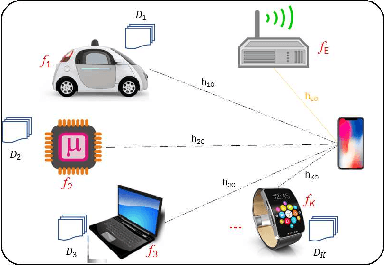
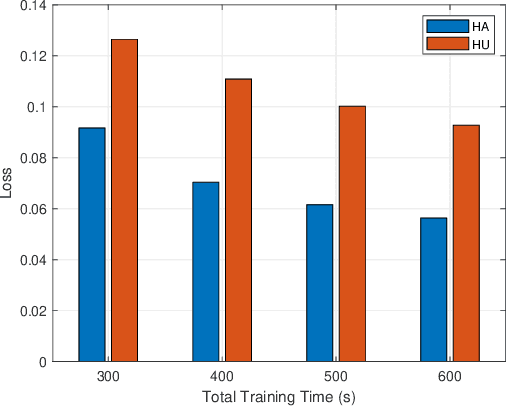
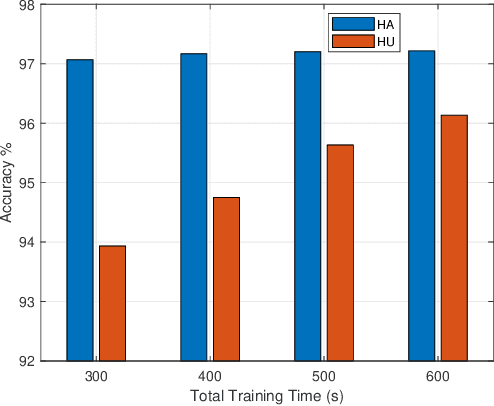
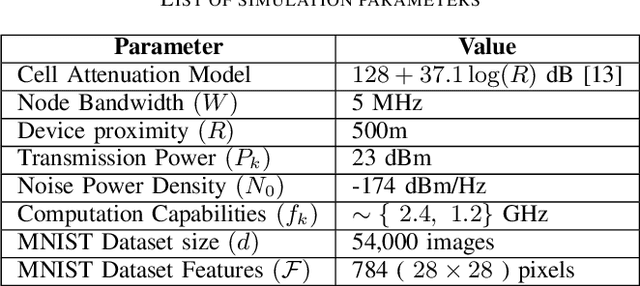
Abstract:This paper proposes to minimize the loss of training a distributed machine learning (ML) model on nodes or learners connected via the resource-constrained wireless edge network by jointly optimizing the number of local and global updates and the task size allocation. The optimization is done while taking into account heterogeneous communication and computation capabilities of each learner. It is shown that the problem of interest cannot be solved analytically but by leveraging existing bounds on the difference between the optimal loss and the loss at any given iteration, an expression for the objective function is derived as a function of the number of local updates. It is shown that the problem is convex and can be solved by finding the argument that minimizes the loss. The result is then used to determine the batch sizes for each learner for the next global update step. The merits of the proposed solution, which is heterogeneity aware (HA), are exhibited by comparing its performance to the heterogeneity unaware (HU) approach.
Adaptive Task Allocation for Asynchronous Federated Mobile Edge Learning
May 05, 2019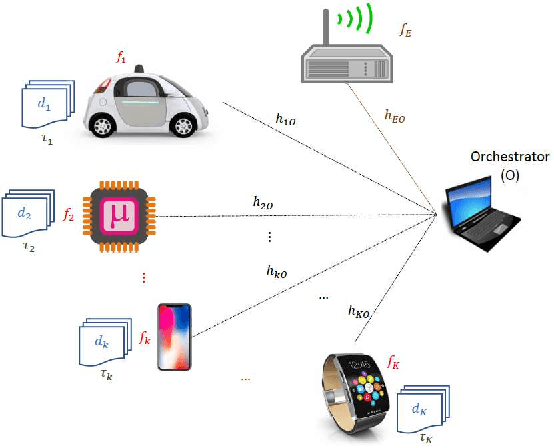

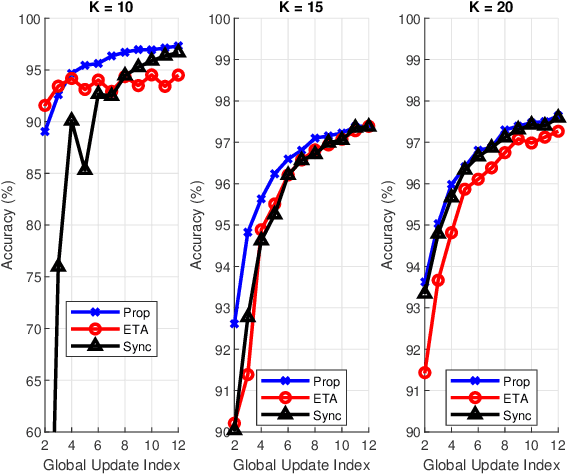
Abstract:This paper proposes a scheme to efficiently execute distributed learning tasks in an asynchronous manner while minimizing the gradient staleness on wireless edge nodes with heterogeneous computing and communication capacities. The designed approach considered in this paper ensures that all devices work for a certain duration that covers the time for data/model distribution, learning iterations, model collection and global aggregation. The resulting problem is an integer non-convex program with quadratic equality constraints as well as linear equality and inequality constraints. Because the problem is NP-hard, we relax the integer constraints in order to solve it efficiently with available solvers. Analytical bounds are derived using the KKT conditions and Lagrangian analysis in conjunction with the suggest-and-improve approach. Results show that our approach reduces the gradient staleness and can offer better accuracy than the synchronous scheme and the asynchronous scheme with equal task allocation.
Adaptive Task Allocation for Mobile Edge Learning
Nov 09, 2018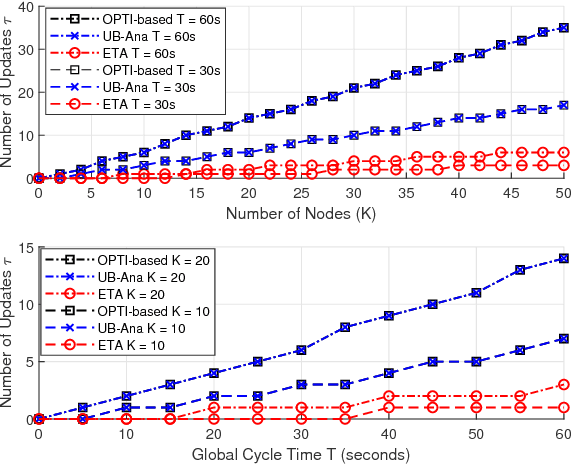
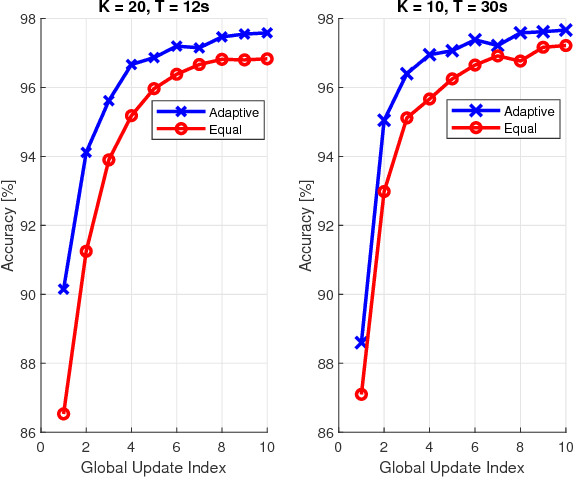
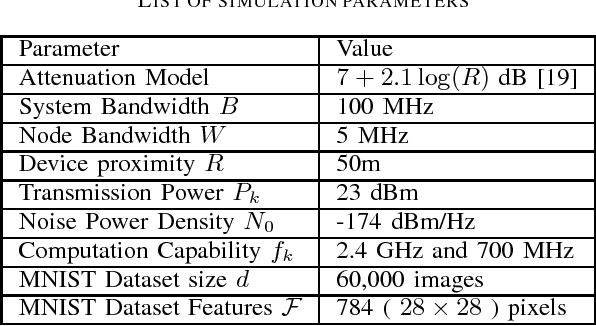
Abstract:This paper aims to establish a new optimization paradigm for implementing realistic distributed learning algorithms, with performance guarantees, on wireless edge nodes with heterogeneous computing and communication capacities. We will refer to this new paradigm as "Mobile Edge Learning (MEL)". The problem of dynamic task allocation for MEL is considered in this paper with the aim to maximize the learning accuracy, while guaranteeing that the total times of data distribution/aggregation over heterogeneous channels, and local computing iterations at the heterogeneous nodes, are bounded by a preset duration. The problem is first formulated as a quadratically-constrained integer linear problem. Being an NP-hard problem, the paper relaxes it into a non-convex problem over real variables. We thus proposed two solutions based on deriving analytical upper bounds of the optimal solution of this relaxed problem using Lagrangian analysis and KKT conditions, and the use of suggest-and-improve starting from equal batch allocation, respectively. The merits of these proposed solutions are exhibited by comparing their performances to both numerical approaches and the equal task allocation approach.
 Add to Chrome
Add to Chrome Add to Firefox
Add to Firefox Add to Edge
Add to Edge